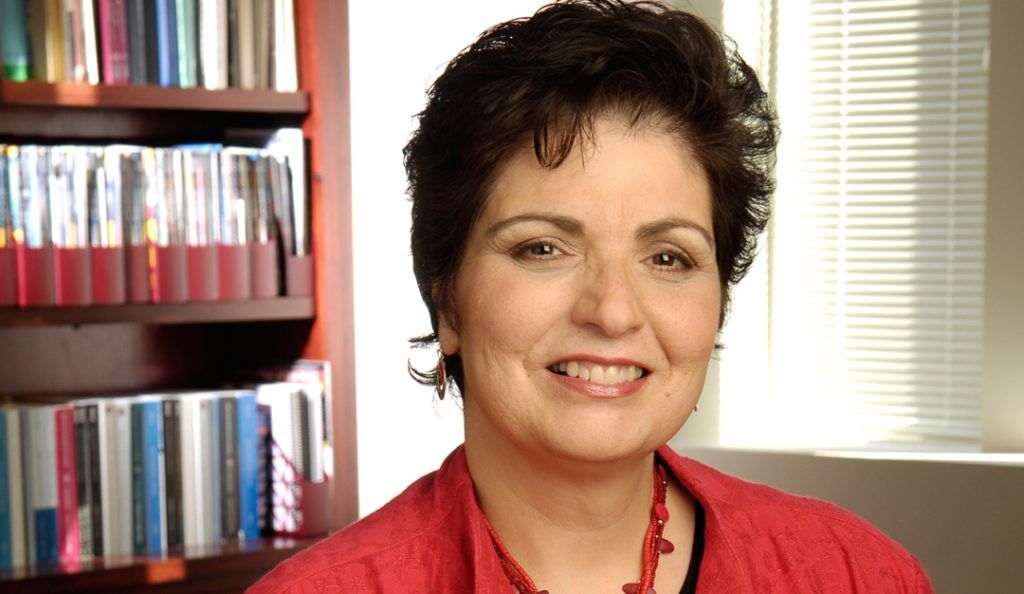BCRF grantee Dr. Electra Paskett talks about her personal and professional connection with breast cancer.
Though my mother and grandmother both had breast cancer, I never intended to focus on cancer research when I chose a career in public health. I had always been interested in women's health and began focusing on breast cancer, screening and diet during my studies. But as luck would have it, my science background would prepare me when I was diagnosed with the disease at 40 — and continues to shape my career.
Deemed high-risk because of my family history, I had a baseline mammogram at an early age, but it was during a routine mammogram at 40 that my breast cancer was discovered. I originally had a lumpectomy and radiation therapy, but had a reoccurrence just four years later. After further treatment, I was prescribed five years of an aromatase inhibitor. Then, nine years later, I had some other abnormalities in the same breast. This time, I had a prophylactic double mastectomy.
As a scientist and former breast cancer patient, I am fortunate that my personal experience with the disease has been able to shape the direction of my research. For example, after my first cancer in 1997, I was diagnosed with lymphedema, a swelling in the arms or legs that results from removing the lymph nodes as part of the cancer treatment. As the time, there was no patient education or awareness about the issue and treatments were pretty archaic, so I began studying it.
In the 17 years since I was first diagnosed, I have watched treatments improve and change the way women and their doctors approach breast cancer. Back then, sentinel lymph node biopsies were not often practiced. A procedure that helps determine the extent of cancer in the body, it is less invasive than standard lymph node surgery. Today, it's just one more option readily available to women. During my bouts with cancer, my only choice for adjuvant hormonal therapy was tamoxifen, which I unfortunately could not take, but today we have a host of other choices in aromatase inhibitors. There are even changes in how often women have to have radiation therapy. This progress is all a result of research.
While discovering new ways of treating breast cancer is vital, my recent research focuses on preventing the disease from ever manifesting in a woman or man. One area I am studying is the role of diet and nutrition in breast cancer. Because obesity is a leading yet preventable cause of breast cancer, losing weight can reduce a person's risk of breast cancer. We have learned that it is easier for women to introduce exercise into their lives than to change their diet. Going forward, I am interested in looking at ways to get women to start — and stick with — an exercise routine and get regularly screened for breast cancer.
And while we are always learning more about the disease, there are certain recommendations I can make today:
1. Exercise is essential in reducing obesity. In my studies with women, we set a goal of at least 10,000 steps a day. Use a pedometer, Fitbit or even a cell phone app to keep count of your steps every day.
2. Diets low in fat and carbs can both result in weight loss. What is most important is to eat all foods in moderation — that includes alcohol consumption.
3. Know your family history and learn your personal risk. If appropriate, seek genetic counseling.
4. If you notice a change in your body, follow up. Prompt and proper follow-up care and adherence to treatment can provide the best chances of successfully fighting breast cancer.
As a researcher who has both studied and personally grappled with breast cancer, I know firsthand that the only way to continue making progress is by funding more research. I have seen the results of our research go from the lab to the bedside to the community, and I am confident that the answers are within our reach.
This article was orginally published on Huffington Post where Dr. Electra Paskett who blogged on behalf of the Breast Cancer Research Foundation. A grantee since 2001, Dr. Paskett is a Professor at the Ohio State University College of Medicine.







